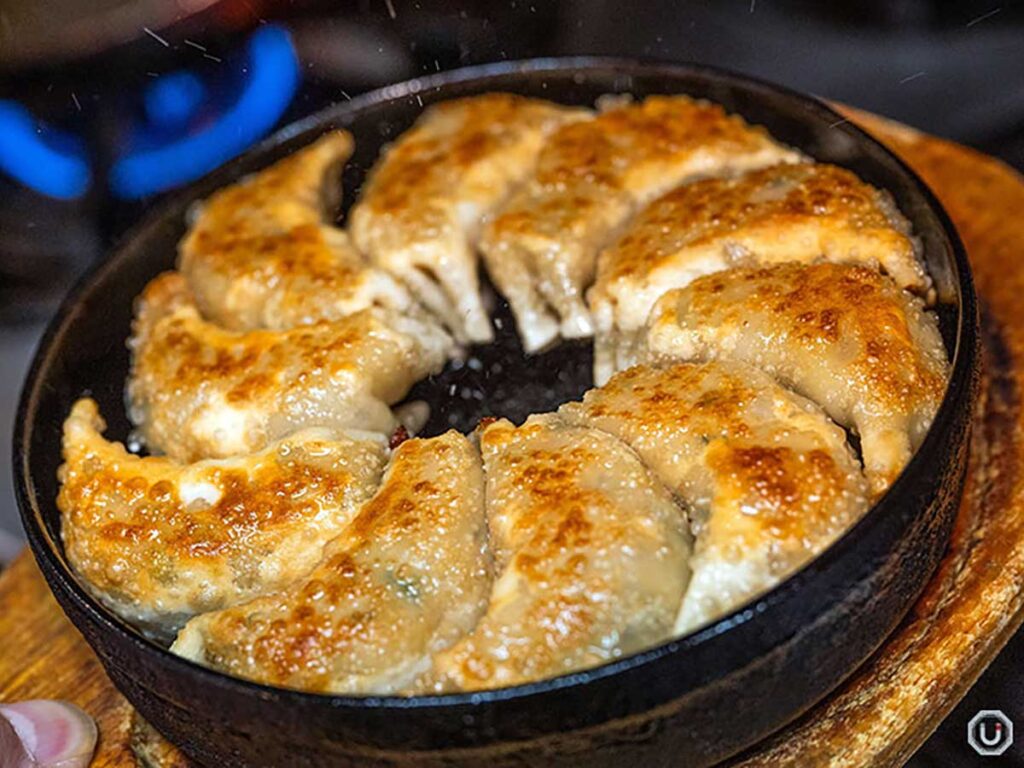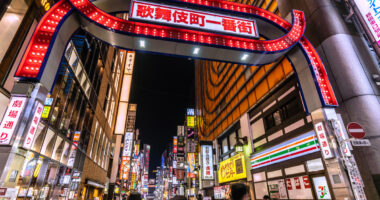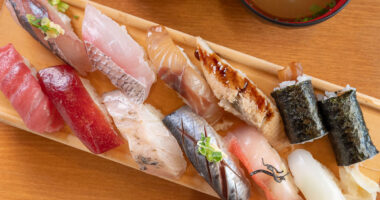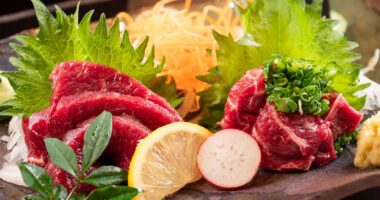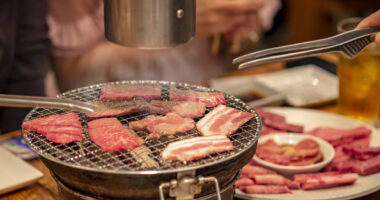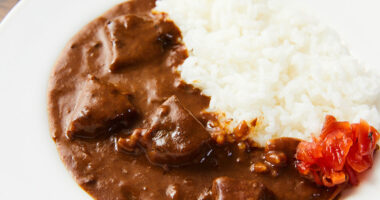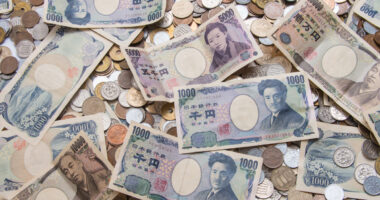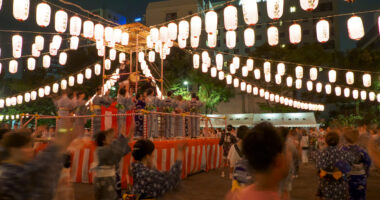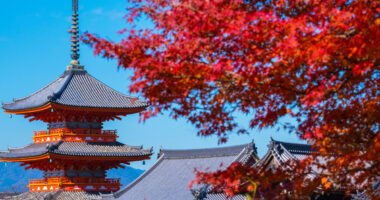Gyōza (Japanese dumplings) are a beloved dish in Japan. As with many of the various types of dumplings enjoyed around the world, they feature a dough wrapper and delicious fillings. However, gyoza has a distinct character and appeal that differs from dumplings in other countries.
In this article, we explain the origins, cooking methods, and differences in fillings to clarify each one’s defining traits.
Basic definitions: gyoza and other filled dumplings
First, let’s make clear what each dumpling type refers to. Understanding this difference explains why gyoza and dumplings from other countries are often confused—and how they actually diverge.
What are gyoza?
Japanese gyoza are a classic home dish—an adaptation of a Chinese original tailored to Japanese tastes. A thin wheat flour wrapper encloses fillings such as ground pork, cabbage, and garlic chives, and in Japan they’re typically cooked pan-fried.
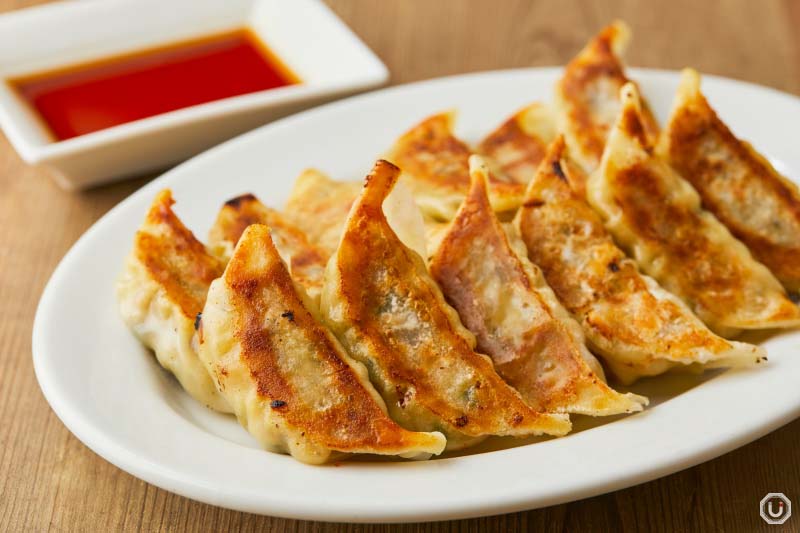
Vegetable Gyoza at “T’s TANTAN ecute Ueno”
After World War II, people returning from China helped popularize gyoza in Japan, where the dish then evolved to suit local preferences.
If you’d like to learn more about types, features, and the proper way to enjoy them, see this article:
What are gyoza? | Types, characteristics, and how to eat them
Today in Japan, gyoza are enjoyed as a side dish in set meals and as a favorite pairing with beer.
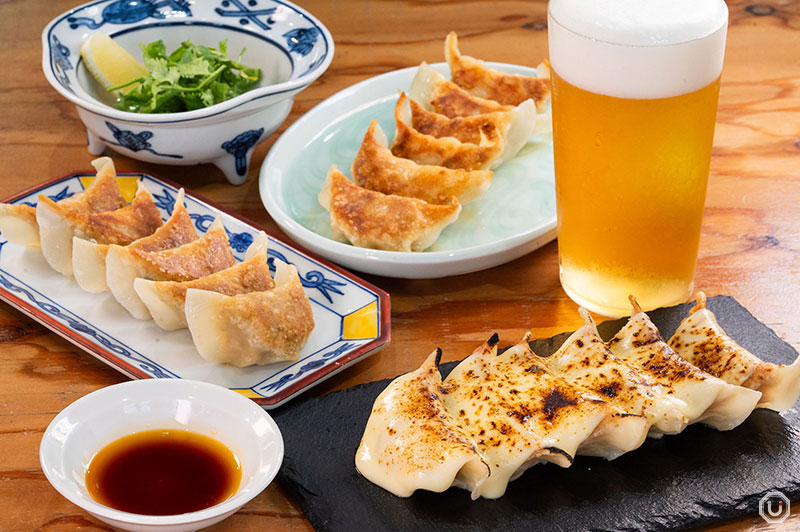
At “KITTAN GYOZA,” enjoy their signature gyoza—best paired with an ice-cold draft beer!
The mainstream style is yaki-gyōza (“pan-fried gyoza”): the bottoms are seared crisp, then the dumplings are steam-fried. This hybrid technique developed uniquely in Japan.
Other filled dumplings worldwide
There are many kinds of filled dumplings around the world. For example, Chinese boiled jiaozi, xiaolongbao, wontons, and steamed buns; Korean mandu; and European styles such as pelmeni and pierogi, among many others.
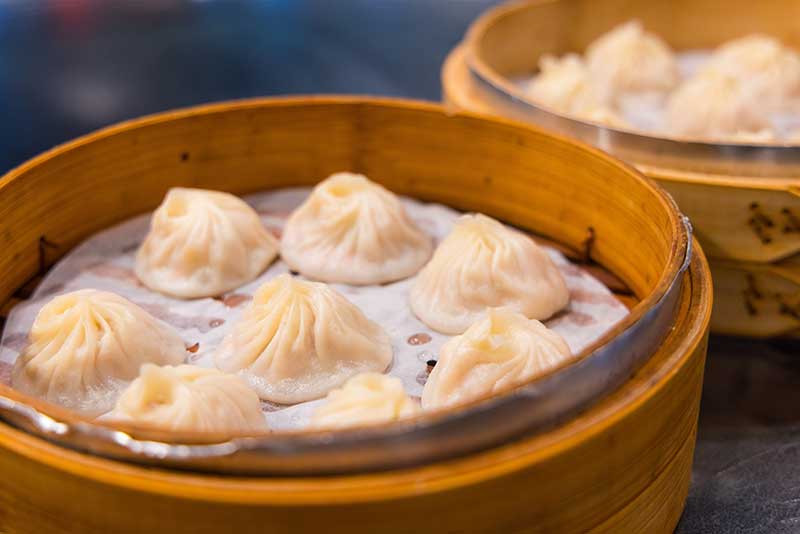
Xiaolongbao (photo for illustrative purposes)
Cooking methods vary widely by region—boiling, steaming, and deep-frying are common. Fillings range from meats and vegetables to seafood and even sweet fruit mixtures.
Origins of gyoza and how they developed in Japan
Knowing how Japanese gyoza took their present form makes the distinction from other filled dumplings even clearer.
From China to Japan
The prototype of Japanese gyoza traces back to Chinese jiaozi. During World War II, Japanese soldiers and civilians stationed in China brought the taste home when they returned—experiences in Manchuria (northeastern China) are often cited as especially influential.
At first, they were prepared more like Chinese boiled filled dumplings, but they gradually changed to match Japanese palates and dining customs. Through that process, a distinctly Japanese style of gyoza emerged.
How Japan made gyoza its own
In the postwar recovery period, gyoza quickly became a beloved everyday dish and took deep root in Japanese food culture. Cities such as Utsunomiya and Hamamatsu developed particularly vibrant gyoza cultures and are still known for them today. As the dish spread, seasonings and methods that suit Japanese preferences became standard.
One major difference from China is Japan’s embrace of pan-fried gyoza as the mainstream style.
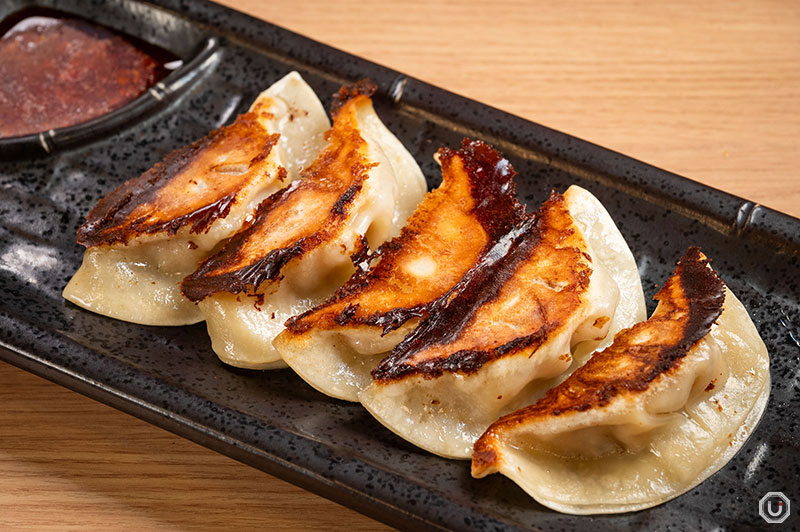
Yaki Gyoza at “SANKYU HALAL JAPANESE FOOD”
While boiled versions are common in China, in Japan the pan-fried style—with its crisp underside—became the norm. Gyoza also settled into a uniquely Japanese role: a savory side dish to eat with rice.
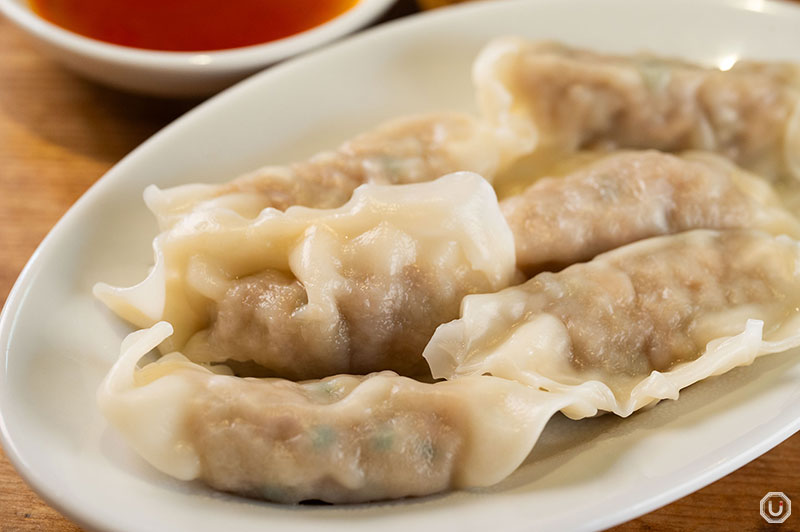
“Addicting Gyoza Dumplings (6 Pieces)” served boiled at “Souryutougyokudo Roppongi” (choice of grilled, fried or boiled)
Gyoza in Japan today
In modern Japan, gyoza are a staple of home cooking. Frozen gyoza have made them even easier to enjoy, and dedicated specialty shops abound. The dish has also spread overseas as “gyoza,” now widely recognized as part of Japanese cuisine.
In this way, gyoza have been established as a dish with Chinese roots that underwent a distinctly Japanese evolution—explaining why they differ from other filled dumplings.

Umami Bites writer enjoying Hakata Iron Plate Gyoza and draft beer at “Kyūshū Nechūya Ueno LIVE”
Varieties of filled dumplings worldwide—and where gyoza fit
There is remarkable diversity among the world’s filled dumplings, each with its own traits. Japanese gyoza belong to this larger family while occupying a distinctive niche.
Asian filled dumplings: key traits
Across Asia’s rice-centered food cultures, many filled dumplings developed with flavors and techniques that pair well with rice and noodles. Chinese boiled jiaozi often use thicker wrappers with a pleasantly chewy bite that lets you savor the filling’s umami. Xiaolongbao are steamed so their soup stays sealed inside, offering a unique experience.
Korean mandu resemble Japanese gyoza in shape, but often include tofu or glass noodles for a lighter profile. Taiwan’s boiled filled dumplings and guo tie (pan-fried filled dumplings) have also evolved in distinctive ways, reflecting strong regional character.
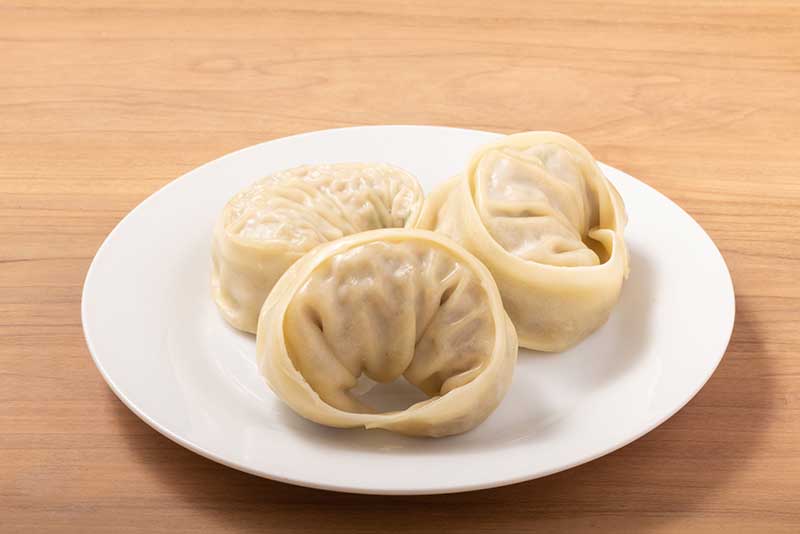
Mandu (photo for illustrative purposes)
European filled dumplings: key traits
Many European cuisines feature analogous dishes. Russian pelmeni encase beef or pork in thin wrappers and are served boiled. Polish pierogi often contain potato or cheese and commonly function as a staple food.
Compared with many Asian styles, European filled dumplings tend to use thicker wrappers and serve as a more filling staple. Pairings with dairy—like sour cream or butter—are also characteristic.
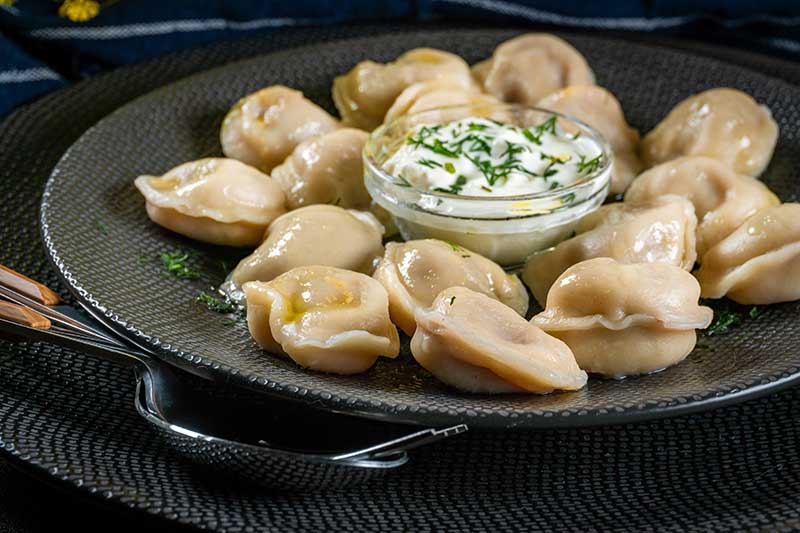
Pelmeni (photo for illustrative purposes)
What makes Japan’s gyoza unique
Within the world of filled dumplings, Japan’s gyoza developed in a way that centers on the pan-fried style and are internationally recognized as “gyoza.” The technique is uniquely Japanese: the contrast between a crisp bottom and a chewy top is unlike most other styles.
Other hallmarks include their role as a side for rice and a bolder garlic-forward seasoning. Today, gyoza appear on menus at Japanese restaurants around the world and are widely recognized as a representative Japanese dish.
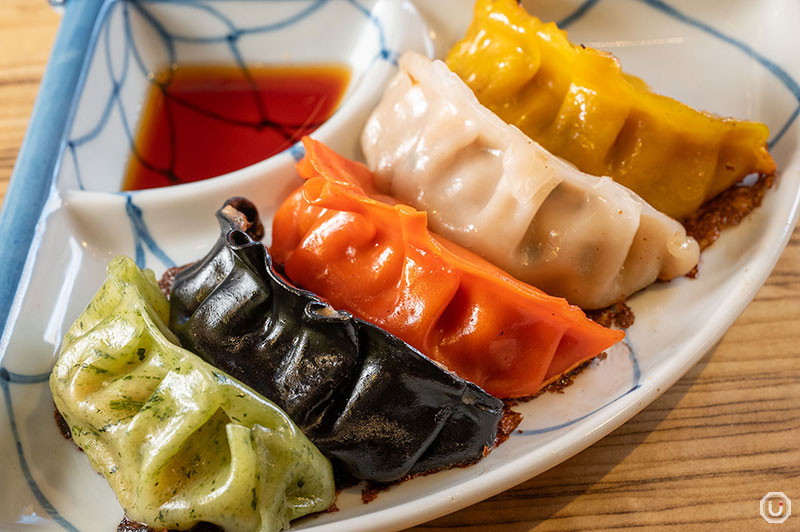
Edo Five Rings Kakekomi Gyoza at “Shinjuku Kakekomi Gyoza”
| Item | Japanese gyoza | Chinese boiled filled dumplings | Korean mandu | European filled dumplings |
|---|---|---|---|---|
| Main cooking method | Yaki-gyoza (sear + steam) | Boiled | Steamed / boiled | Boiled |
| Wrapper characteristics | Thin; optimized for pan-frying | Thicker; pleasantly chewy | Medium thickness | Thicker; filling and hearty |
| Representative fillings | Pork, cabbage, garlic chives | Pork, napa cabbage, scallions | Pork, tofu, glass noodles | Beef, potato, cheese |
| Seasoning profile | Bold, garlic-forward | Filling’s natural umami | Lighter profile | Simple, lightly salted |
| Role in food culture | Side for rice; beer snack | Staple food; festive dish | Soup filling; light meal | Staple food |
Cooking methods and texture differences
One of the biggest differences lies in how they’re cooked. Those methods produce each style’s hallmark textures and flavors.
How Japan cooks gyoza
Japan’s representative method is yaki-gyoza: sear the bottoms until crisp, then steam-fry.
First, oil a pan and brown the bottoms; once colored, add a small amount of water and cover to steam. This yields a crisp underside and a pleasantly chewy top—contrasting textures that define the experience.
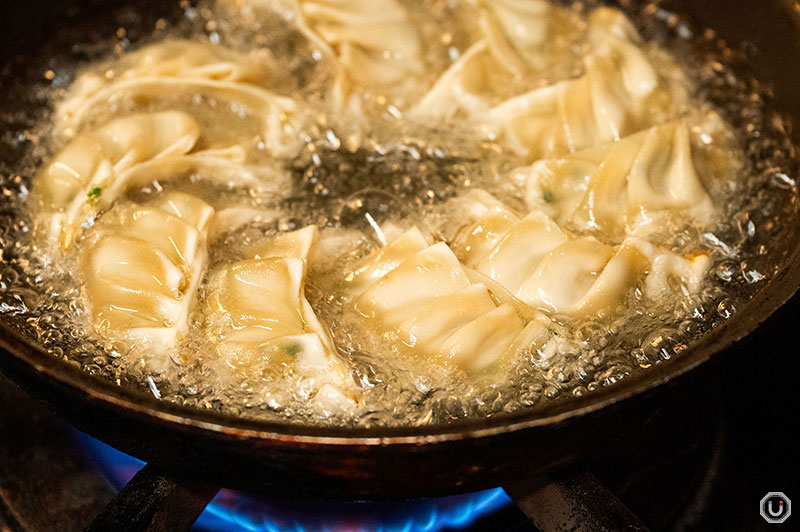
Hakata Iron Plate Gyoza grilled in plenty of oil at “Kyūshū Nechūya Ueno LIVE”
How other filled dumplings are cooked around the world
Methods vary widely—steaming, boiling, and deep-frying are all common. In Chinese cuisines, boiled and steamed styles are typical; xiaolongbao are steamed and served as dim sum, wontons are often boiled and served in soup, and steamed buns are made with leavened dough.
Korean mandu are commonly steamed or boiled and frequently served in soups. European filled dumplings are typically boiled. These methods evolved to suit local climates, ingredients, and dining customs.
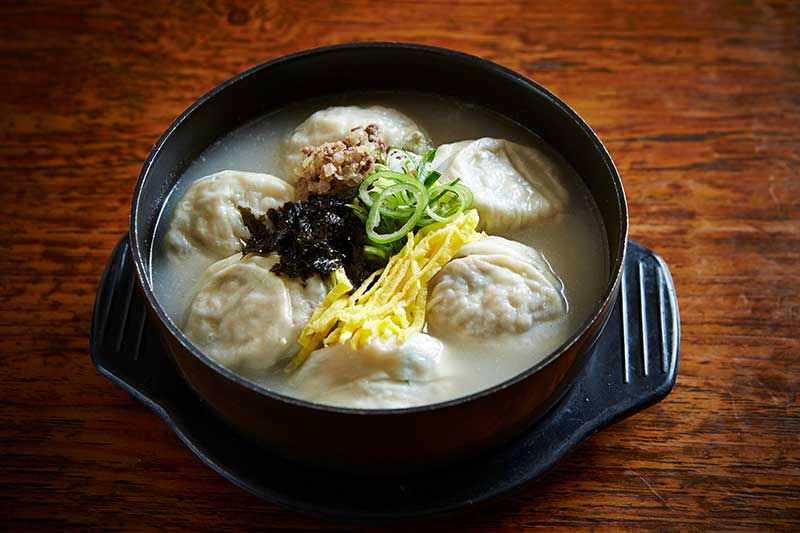
Soup made with mandu (photo for illustrative purposes)
How cooking method shapes texture
Cooking method directly influences texture. Japan’s yaki-gyoza are defined by the contrast of a crisp base and chewy top. By contrast, boiled and steamed styles are chewy throughout and let you savor the filling’s umami.
Deep-fried versions are crisp all over, offering a different pleasure. Same basic form, very different eating experiences—this is the fun of the filled dumpling family.
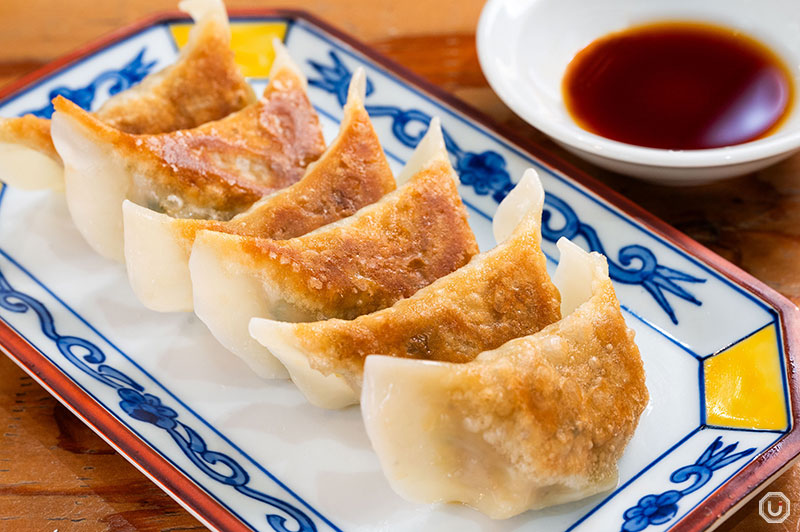
Kittan Gyoza (6 pieces) at “KITTAN GYOZA”
Wrappers and fillings
Another key difference lies in the wrappers and fillings used—choices that define each style’s personality.
Gyoza wrappers
Japanese gyoza wrappers are thin and quick-cooking—optimized for pan-frying. Made mainly from wheat flour and water and rolled thin, they’re designed to crisp when seared. They’re also easy to fold, with enough flexibility to seal the filling securely.
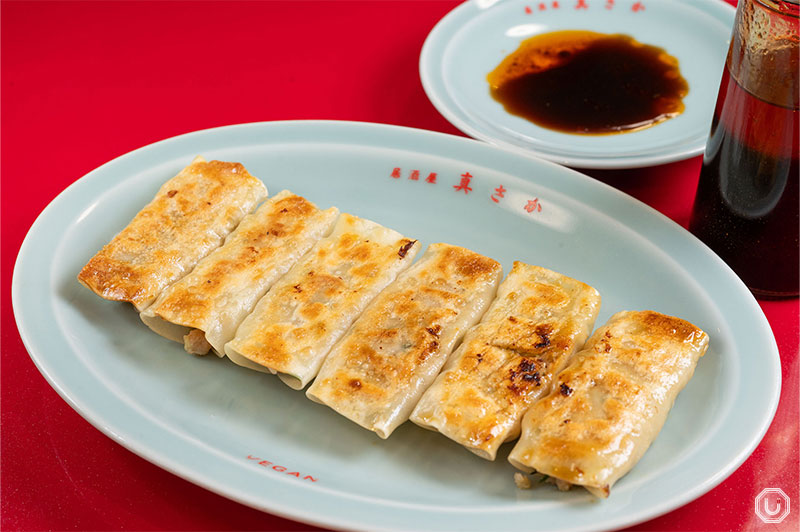
“Dumplings” (gyoza) at “Vegan Izakaya Masaka”
Store-bought wrappers are widely available, making gyoza easy to cook at home. This thinness and frying suitability are crucial to Japan’s signature texture.
Wrappers for other filled dumplings
Wrapper thickness and ingredients vary widely by style, optimized for each cooking method. Chinese boiled filled dumplings often use thicker wrappers that hold a chewy bite after boiling. Xiaolongbao wrappers are specially made to be thin yet strong enough to contain soup when steamed.
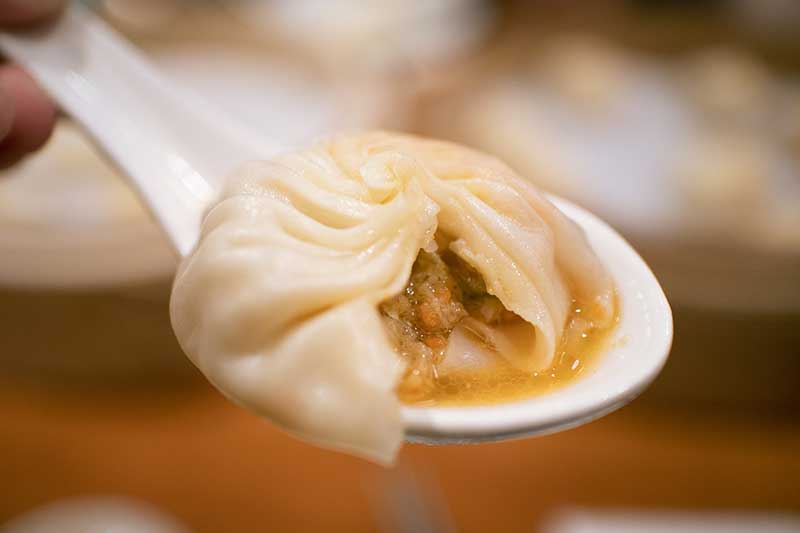
Xiaolongbao (photo for illustrative purposes)
Steamed buns use leavened dough for a fluffy crumb, while wonton wrappers are extremely thin for ease in soup. In short, wrappers vary to match how and where they’re served.
Fillings: differences and why they developed
Typical gyoza fillings are ground pork, cabbage, garlic chives, garlic, and ginger—seasoned to pair well with rice.
These choices suit Japanese tastes; the bold, garlic-forward seasoning is tuned to eat with rice. Water content and texture of vegetables are also balanced so the filling cooks optimally when pan-fried.
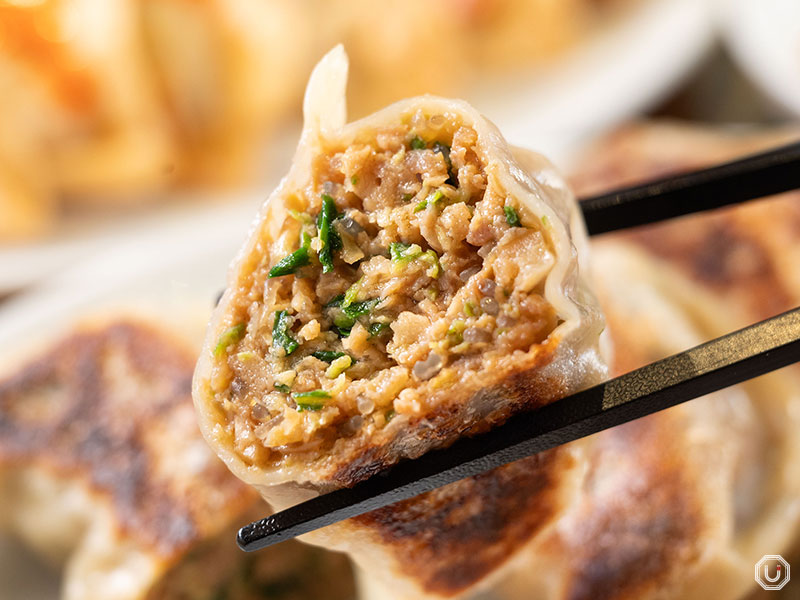
“Large Gyoza Dumplings” filled with cabbage and garlic chives at “Souryutougyokudo Roppongi”
By contrast, fillings for other filled dumplings are extremely diverse. Chinese styles combine napa cabbage, scallions, shrimp, pork, beef, and more in many permutations. Korean mandu may include tofu or glass noodles, while European styles use beef, lamb, or potatoes, among others.
Seasoning and ways to eat: cultural differences
Seasoning and serving styles also differ, reflecting local food cultures and habits.
Gyoza: seasoning and how to eat
Gyoza fillings are typically well seasoned—and delicious even on their own. Soy sauce, salt, pepper, and especially garlic and ginger create a bolder profile tuned for eating with rice.
For dipping, the standard is a mix of soy sauce and vinegar with a splash of chili oil. As set meals, gyoza are often served with miso soup and rice and are deeply rooted in everyday dining. They also pair naturally with beer, making them a staple of izakaya culture.
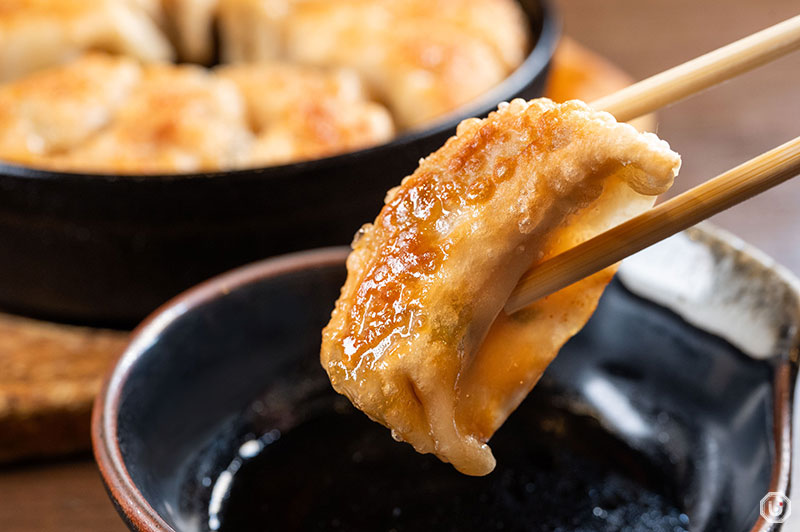
Hakata Iron Plate Goyza enjoyed with dipping sauce at “Kyūshū Nechūya Ueno LIVE”
Other filled dumplings: seasoning and sauces
Elsewhere, seasoning tends to be more restrained, with sauces or condiments added at the table. In Chinese cuisines, the focus is on the filling’s natural umami, complemented by soy-based dips, black vinegar, or garlic soy. As part of dim sum, delicacy and balance are emphasized.
Korean mandu are often served in soups, where the broth’s flavor takes center stage. European filled dumplings are commonly paired with sour cream or butter sauces and function more as a staple food.

Pelmeni served with sour cream (photo for illustrative purposes)
Different roles in food culture
In Japan, gyoza are mainly enjoyed as a side for rice or as a snack with drinks, whereas in many regions other filled dumplings are staples, light meals, or celebratory dishes. In China, families gather to make them for Lunar New Year; in Korea, mandu are traditionally eaten at New Year as well.
These cultural differences shaped cooking methods and flavors. Japan’s embrace of pan-fried gyoza reflects an evolution aligned with local tastes and eating habits.
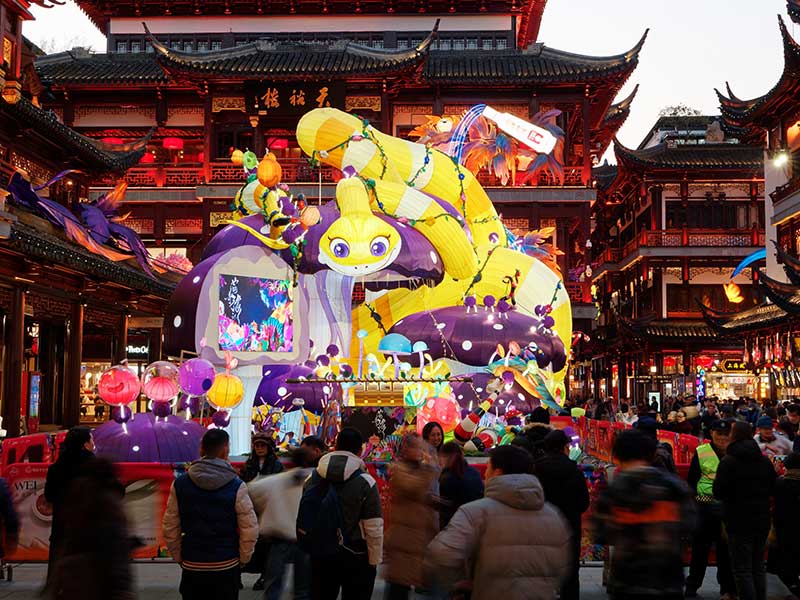
Chinese New Year festivities (photo for illustrative purposes)
Summary
Gyoza and other filled dumplings share a common idea, but the most important point is that gyoza are a uniquely Japanese evolution within the larger filled dumpling family. Though rooted in China, they adapted to Japanese tastes and customs.
In particular, the pan-fried method is distinctive, combining a crisp underside with a chewy top—along with bolder, garlic-forward seasoning and a role as a rice side. These are hallmarks of Japan’s food culture.
Meanwhile, filled dumplings around the world reflect local ingredients and traditions. Methods include steaming, boiling, and deep-frying, and fillings and flavors vary widely. That diversity is precisely what makes the global family of filled dumplings so compelling.
